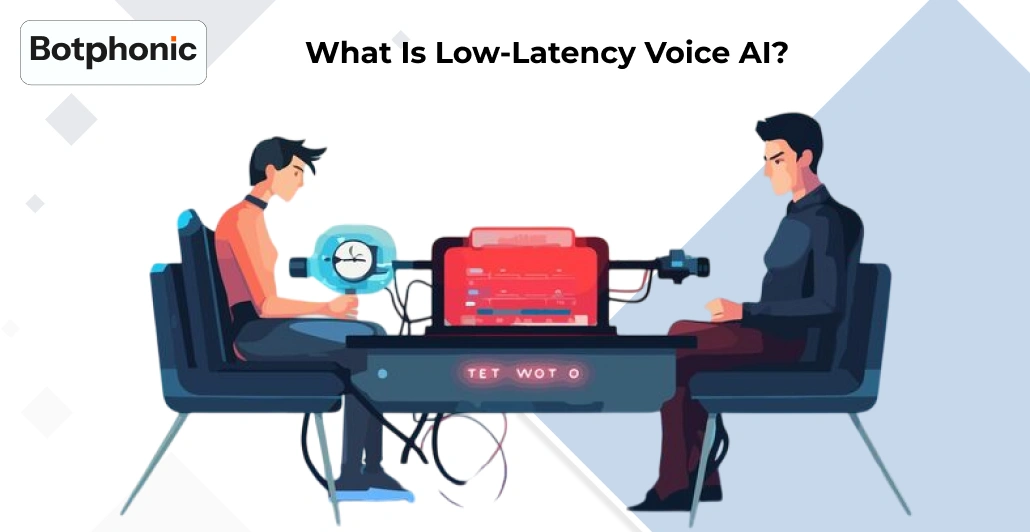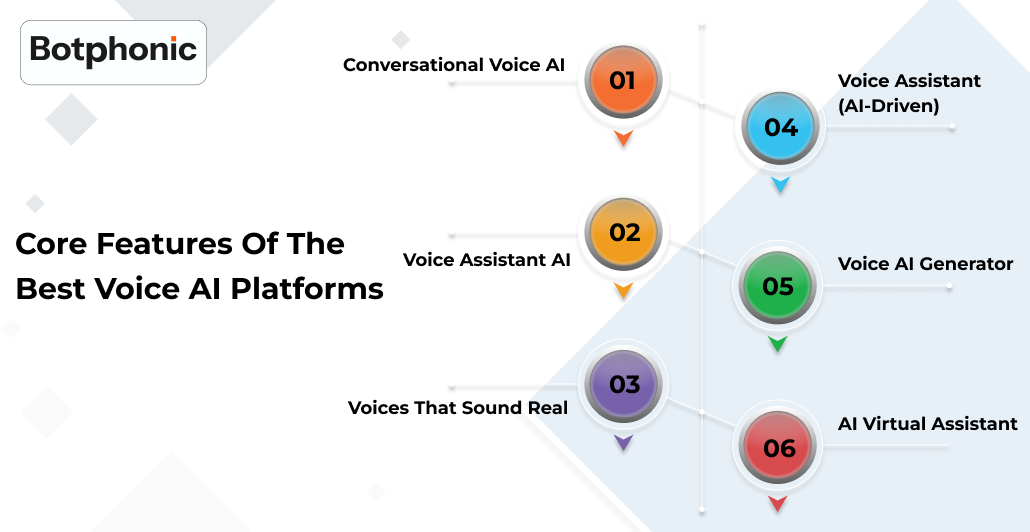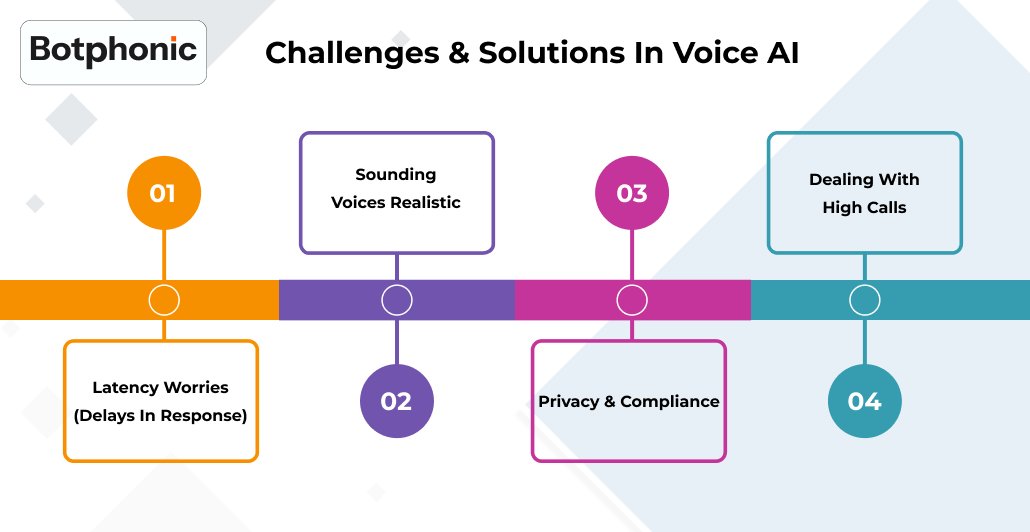
Summarize Content With:
Summary
In this blog, we will discuss how low-latency voice AI is transforming customer experiences, why it is vital to business, and what some of the preeminent platforms are when it comes to offering conversational intelligence using intelligent voices.
Key Takeaways
- The low latency produces humanlike conversations and increases customer trust.
- The new AI call assistants help to overcome impatience and increase productivity.
- The use of multilingual, scalable, and real-time solutions now drives the future of conversational voice AI.
- Selecting the appropriate platform is the act of balancing the latency, cost, voice quality and integrations.
Introduction
How about dialing into a help centre, being on hold for several minutes, only to be told, “Your call is important to us, please hold”? Frustrating, right? And now just think what it would feel like to get the same result, but this time with an AI call assistant responding within a second, in a natural human-like tone, and able to comprehend your question immediately.
This is the promise of low-latency voice AI, the technology being developed to make conversations flow, feel natural and respond in real time. As compared to older systems in which a delay produced interactions that sounded robotic or awkward, current platforms have a level of conversational delay of less than 500ms and sometimes sound as natural as a human voice.
This blog will take a deep dive into what low-latency voice AI is all about, why it is a big deal, use cases in various sectors, challenges, good-buyer advice, as well as future trends of low-latency voice AI. We will also contrast the top platforms, including Botphonic, Lindy, Vapi, and IBM Watson, among others, to give you a full representation before venturing into the solutions.
What is Low-Latency Voice AI?

Low-latency voice AI can be defined as voice assistant AI, which is capable of reacting in near real-time when conversing. Technically speaking, latency is the duration needed between a user talking and the response given by the AI.
In the case of natural human interaction, a delay of more than a second generates frustration. That is why the current performance targets of leading vendors are 100-500ms response time. This keeps the customers satisfied that they are communicating with a human and not a machine, which takes a long time to respond.
The importance of low latency is that it maintains a smooth conversation with the use of voice AI and enhances interaction, as well as minimises customer attrition during calls. Organisations that have incorporated it are resolving issues quicker than before, have happier customers, and have quite huge operational cost savings.
Comparative Table: Leading Platforms for Low-Latency Voice AI
| Vendor | Key Features | Latency | Pricing | Voice Options | Integrations |
| Botphonic | Multilingual, analytics, security, 65+ voices, <500ms performance | <500ms | $0.08/min | 65+ human-like | CRM, calendar |
| Lindy | Real phone calls, natural sound | <300ms* | Starts $20/mo* | 30+ voices | API, webhooks |
| Vapi | Developer-friendly, API-first | ~250ms* | $0.05/min | Customizable | APIs, LLM, SaaS |
| Atoms AI | Real-time cloning, deep customisation, <100ms latency | <100ms | Custom* | 100+ lifelike voices | IVR, apps |
| IBM Watsonx | Enterprise-grade NLU, scalable use cases | ~250ms* | Custom | Adaptive | Enterprise integrations |
| Amazon Lex | ASR + NLU for enterprise | ~400ms* | Custom | Multiple | AWS ecosystem |
| Dialogflow | Omnichannel, Google-backed | ~400ms* | Custom | Multiple | Cloud ecosystem |
| Dasha | Flexible, natural voice AI for developers | ~200ms* | $0.09/min | Deep voices | APIs, SaaS |
| Bland AI | Focus on analytics + real-time recognition | ~200ms* | $0.09/min | Deep voices | APIs |
Values marked with () are approximate based on industry benchmarks.
Core Features of the Best Voice AI Platforms

In the context of assessing AI-powered voice assistant platforms, some features are crucial to the application in the real world.
- Conversational voice AI: NLU and sentiment analysis can use tone, intent, and emotion detection.
- Voice assistant AI: Making calendars, call history, and the ability to tie into CRMs make workflows better.
- Voices that sound real: new platforms are capable of creating AI deep voices or soft voices that sound just like real people and can be anywhere between friendly and authoritative.
- Voice assistant (AI-driven): This automates the questions, bookings and frequently asked questions.
- Voice AI generator: Generates new voices and has cloning capabilities and sales or marketing templates.
- AI virtual assistant: It works in the field of inbound calls, outbound calls, sales outreach, and feedback management.
Stat to Note: Juniper Research predicts that organisations that employ conversational AI will save *$80 billion per year on customer services by 2026.
Use Cases: The Real-World Impact of Low-Latency Voice AI
These are some of the radical uses in various industries:
1. Customer Support
- Issue: Customers spend a long time waiting and get frustrated.
- AI Solution: An AI call centre that has low latency will give an instant response, and the wait time will be minimal, maybe close to zero.
- Impact: 24/7 service, better resolutions, and better customer satisfaction.
2. Sales & Lead Generation
- Challenge: People cannot contact every lead on the fly.
- Artificial intelligence solution: AI call assistant systems process cold calling, follow-ups and qualification automatically.
- Restriction: most sales opportunities were captured and reactive outreaches.
3. Appointment Management
- Issue: In the manual scheduling method, errors and gaps in scheduling occur.
- AI Solution: Voice assistant AI will be able to make calls, remind clients, and make follow-ups.
- Result: No loss of meetings, enhanced output.
4. Multilingual Support
- Issue: Language limitation is one of the key factors that causes companies to lose customers.
- AI Solution: Tools such as Botphonic can quickly detect and engage in more than 20 languages.
- Implication: Retention of international clients.
5. Feedback Collection
- Issue: There are few responses to conventional surveys.
- AI Solution: The AI virtual assistant is smooth enough to request feedback at the end of a call.
- Effect: Increased rates of capture, on-the-fly reports.
Get a demo today and see how effortless customer interactions can be.
Try Now!Challenges & Solutions in Voice AI

Although conversational voice AI is relatively well-developed, there are a couple of issues, though. The good news is that most of these difficulties are already being solved in some smart ways.
1. Latency Worries (Delays in Response)
The Challenge: no one enjoys everyone sitting on their hands in silence when they have asked a question. When a voice AI responds in more than a second, it is mechanical and irritating.
The Solution: New systems are built around low-latency processing (usually less than 500ms). The very fast reaction time generates seamless to-and-fro chats that are human-like.
2. Sounding Voices Realistic
The Problem: Before the current crop of AI assistants, the early versions were robotic-sounding, compromising the element of trust with the customers.
The Answer: AI voices sound real in today’s platforms with the introduction of AI deep voice options that offer more natural voices. Most of the systems can also adapt to feelings, and it becomes difficult to differentiate between AI and actual human beings.
3. Privacy & Compliance
The Problem: Talking one-on-one can often entail sensitive information (as is the case with credit cards or schedules), not to mention the security hazard.
The Solution: End-to-end encryption, GDPR compliance, and flexible permissions are now the norm used by the leading providers, so conversations will be kept confidential and safe.
4. Dealing With High Calls
The Problem: Companies struggle to manage thousands of incoming and outgoing calls, particularly in peak times.
The Solution: A contemporary AI call centre system helps to spread the workload, scale the calls, and save operating expenses on human agents by relieving their load.
Future Trends: Where Is Voice AI Headed?
- Low-latency (<100ms) models are coming.
- Even more voice cloning that will support individualised customer experiences.
- Dynamic AI-based virtual assistants that serve in the role of multi-agent support teams.
- Greater emotional awareness of human-quality empathy.
Selecting the Right Platform: Buyer’s Guide
- The selection between a voice AI generator or assistant platform is based upon:
- Latency requirements (less than 500ms is preferable when it comes to human-like flow)
- Per minute/user basis according to call volumes
- Voice diversity (do you require a voice that sounds human in more than one tone?).
- CRM, ERP, and scheduling tool support.
- Scalability & compliance.
Conclusion
The next era of customer interactivity is low-latency voice AI. Customer satisfaction increases and prices are reduced because of the increased ease of conversations between businesses using barely noticeable delays and the sound of conversations as being natural. The opportunities to support people, sell, and manage business are changed using AI agents, who are realistic, secure, and multilingual agents implemented in such platforms as Botphonic.
What to do to rethink your customer experience. You don’t have to scale big to test the low-latency capabilities of your team immediately. To dive deeper, start by trying out an AI call assistant, and explore AI integrations with your customer relationship management (CRM) tools.
Try Botphonic’s low-latency voice AI today and see the difference for yourself. Let’s make your customer experience truly memorable.
Try Now!
